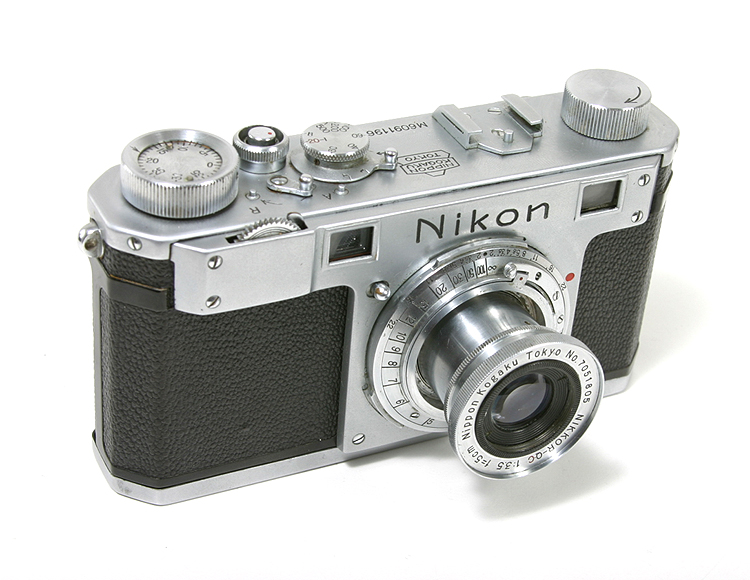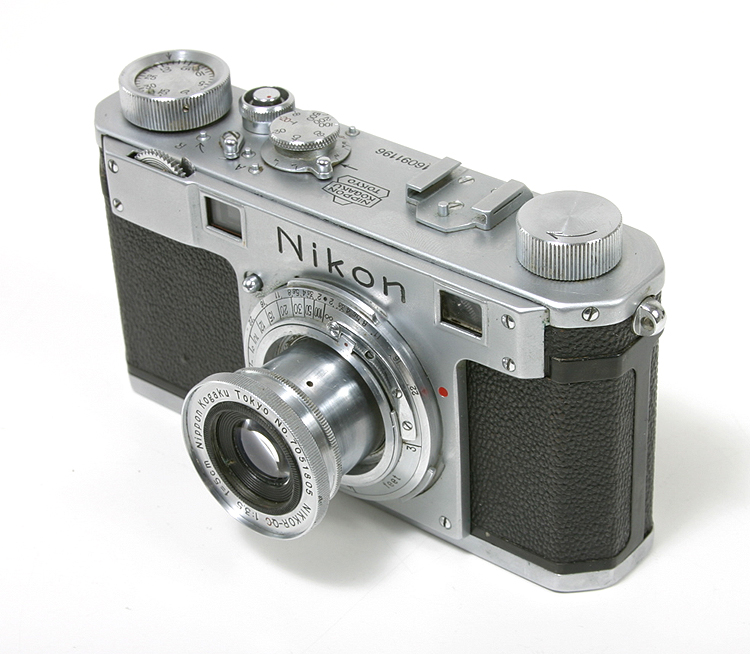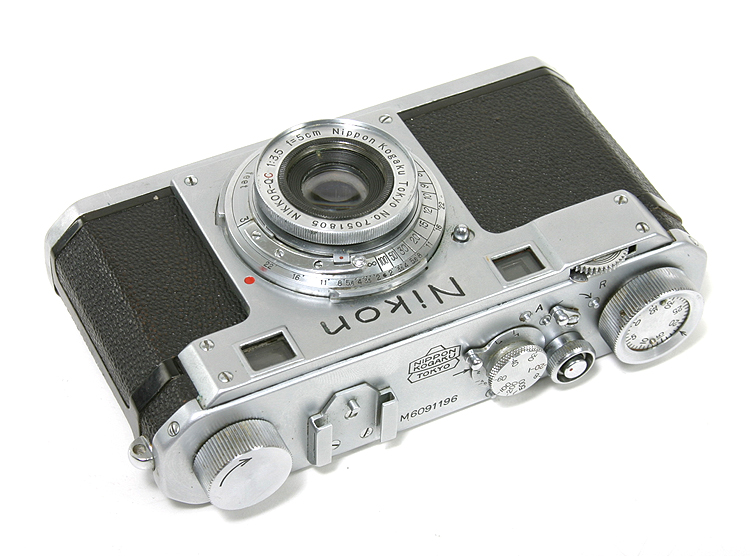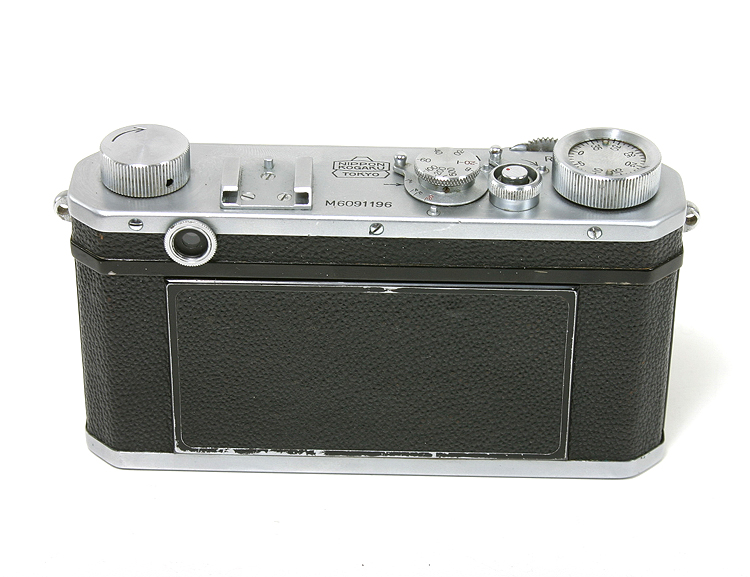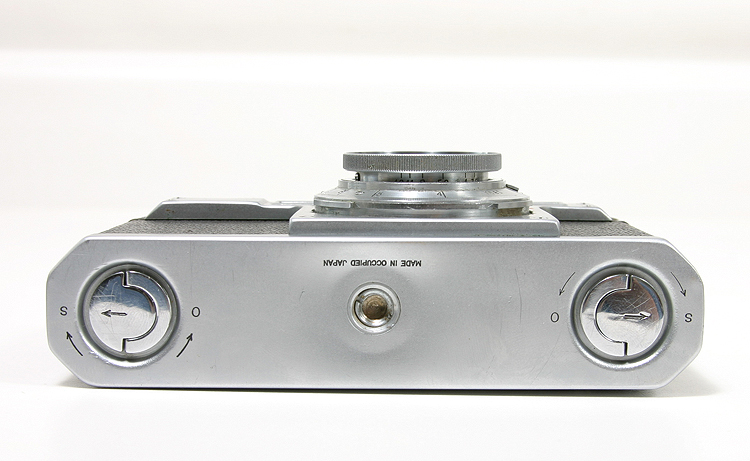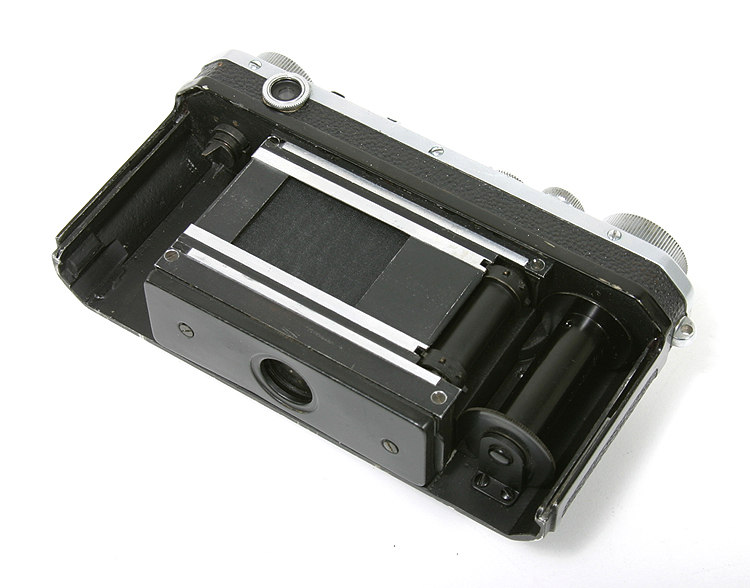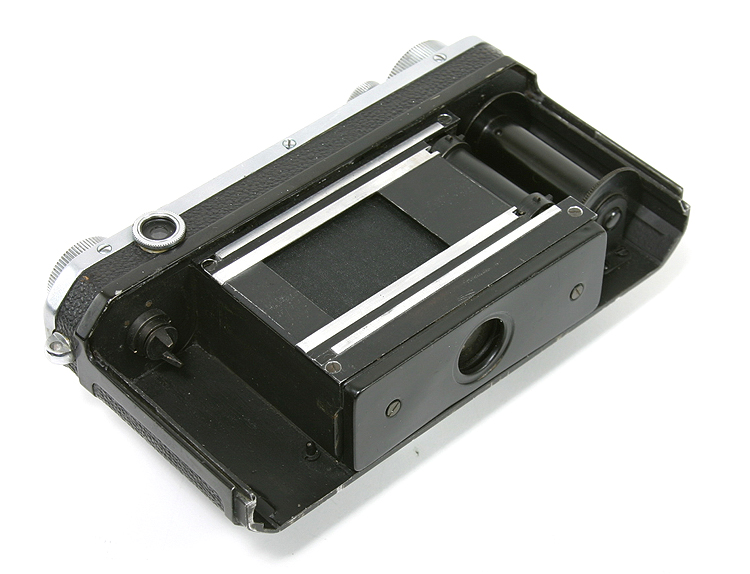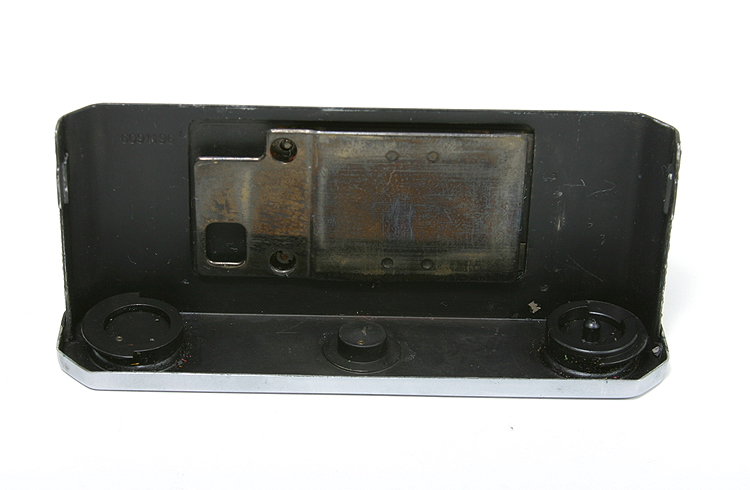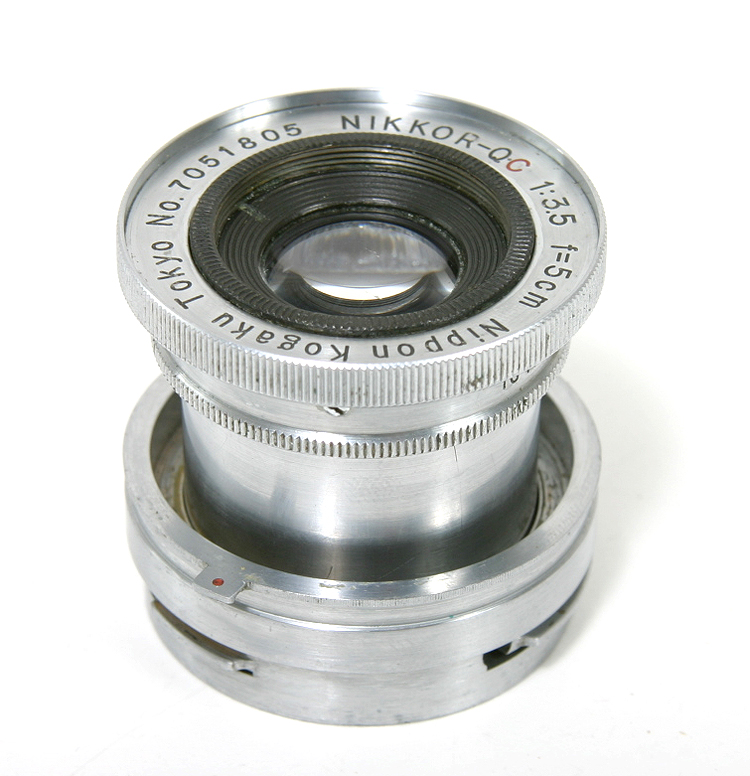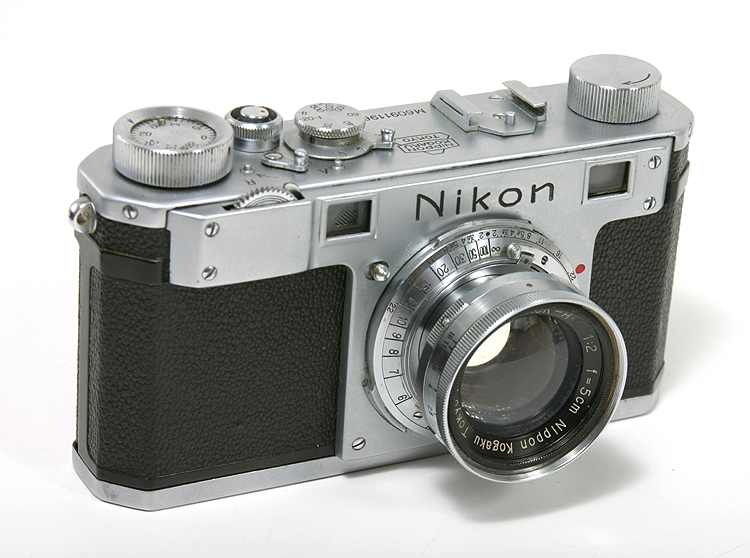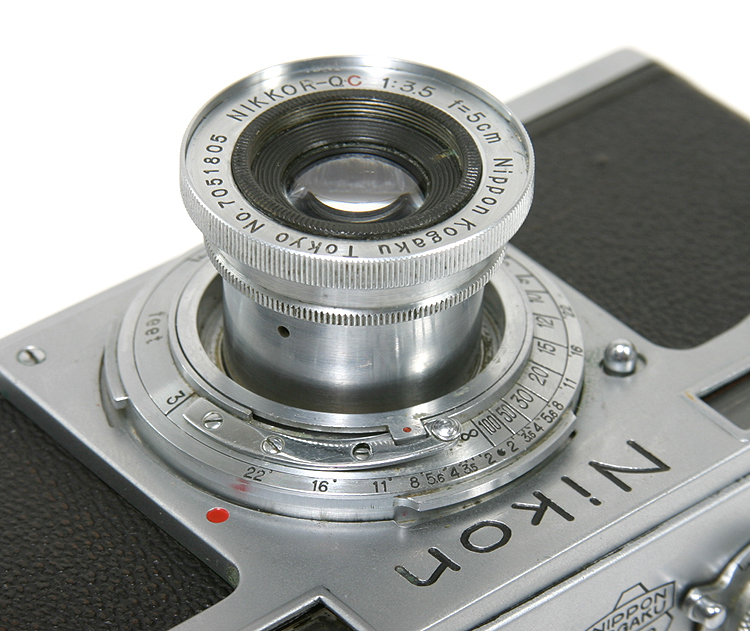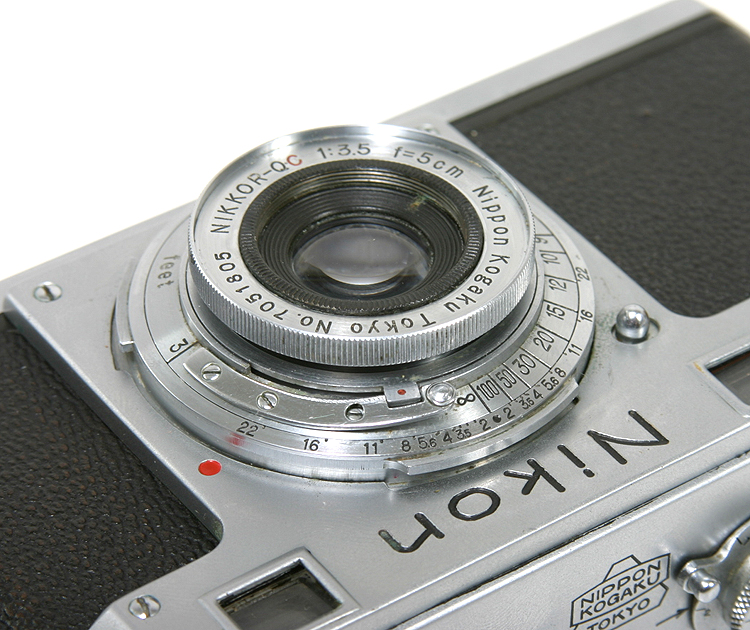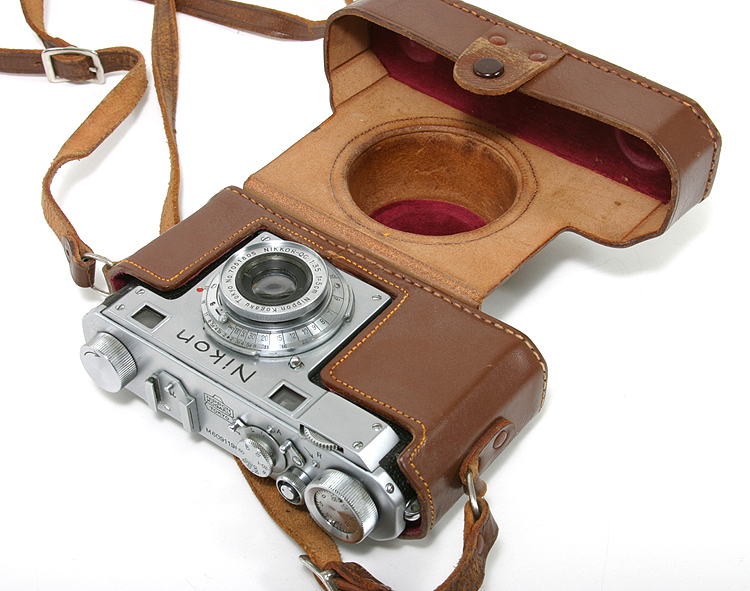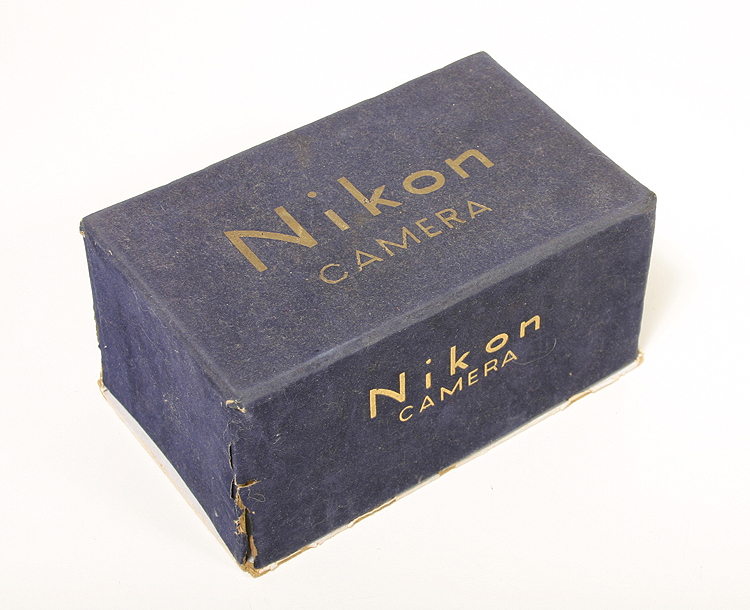
Photographica Pages
An online guide to collectable cameras and related stuff
Nikon M
Nippon Kogaku had already built many of the parts for the Nikon I that would end up as Nikon M
cameras. One part was top plates. To distinguish the 24x32 cameras from the 24x34 cameras, an "M"
was engraved in front of the serial number on the top plate.
There are many different variations in the construction of the camera as it went through it's production
life. As cameras were not assembled in serial number order, later components are found on earlier
cameras. Early cameras are marked MIOJ on the baseplate. Later cameras are stamped in the leather
on the back. Early cameras are finished in dull chrome, later cameras in the bright chrome found on S
cameras.
Somewhere around camera M6092350 flash synch was added to the camera design, although cameras
with earlier numbers may be synched, and cameras with later numbers not. M6092350 was synched.
The factory refered to synched cameras as model MS. Collectors call them synched M's.
The "M' was dropped from the top plate around serial 6094000 in January of 1951. Approximately
3200 Nikon Ms were built since the introduction in 1949, about half of which are synched.
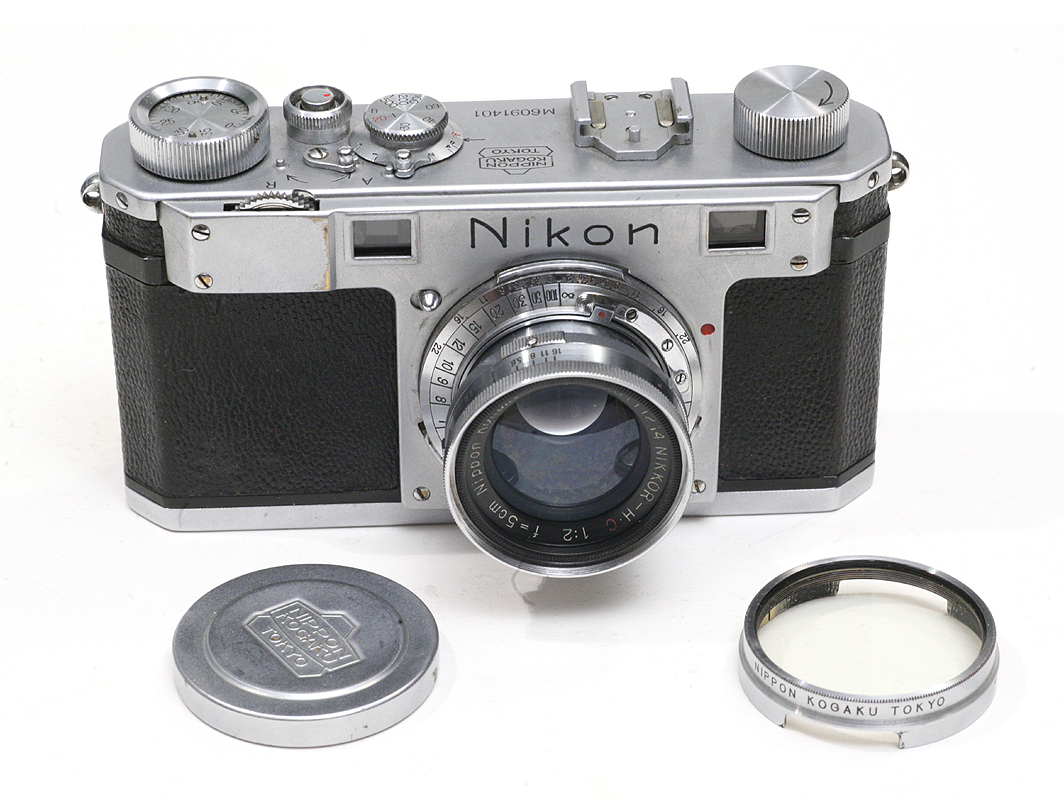
An unsynched Nikon M with 50/2 Nikkor collapsible.
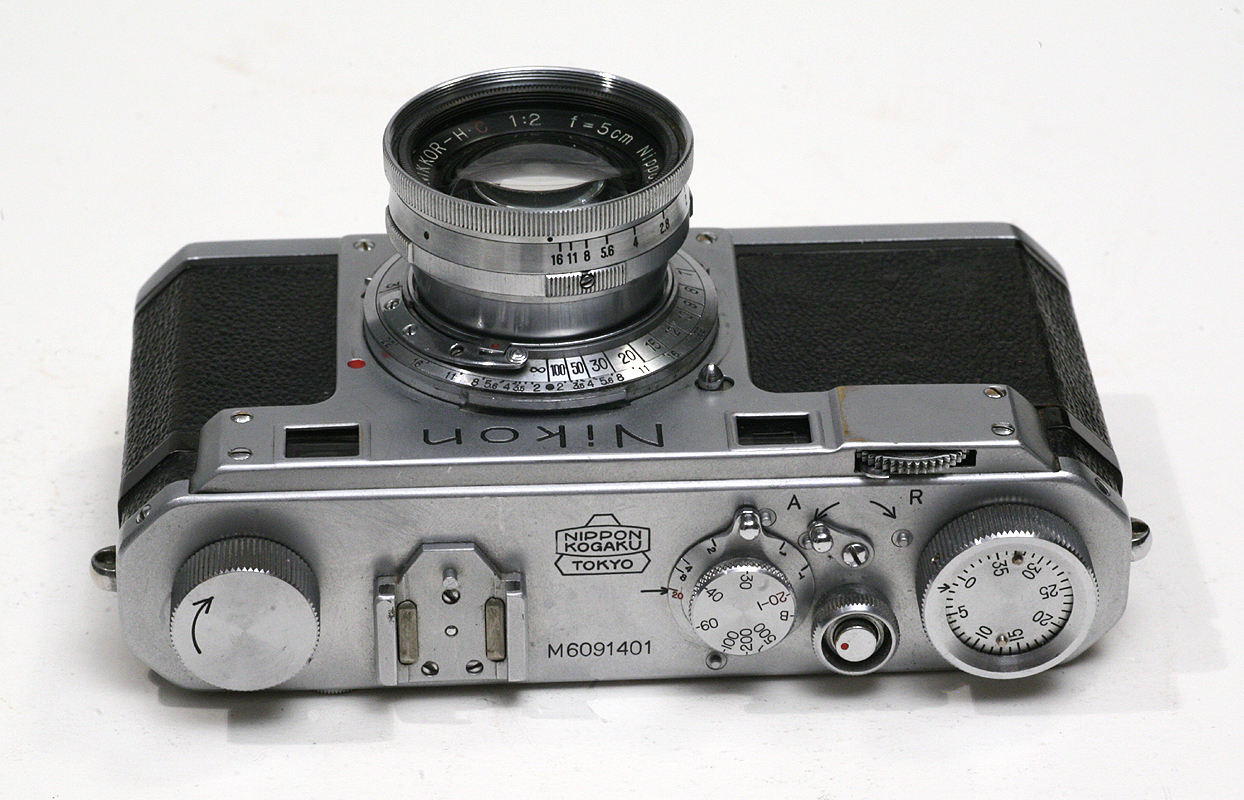
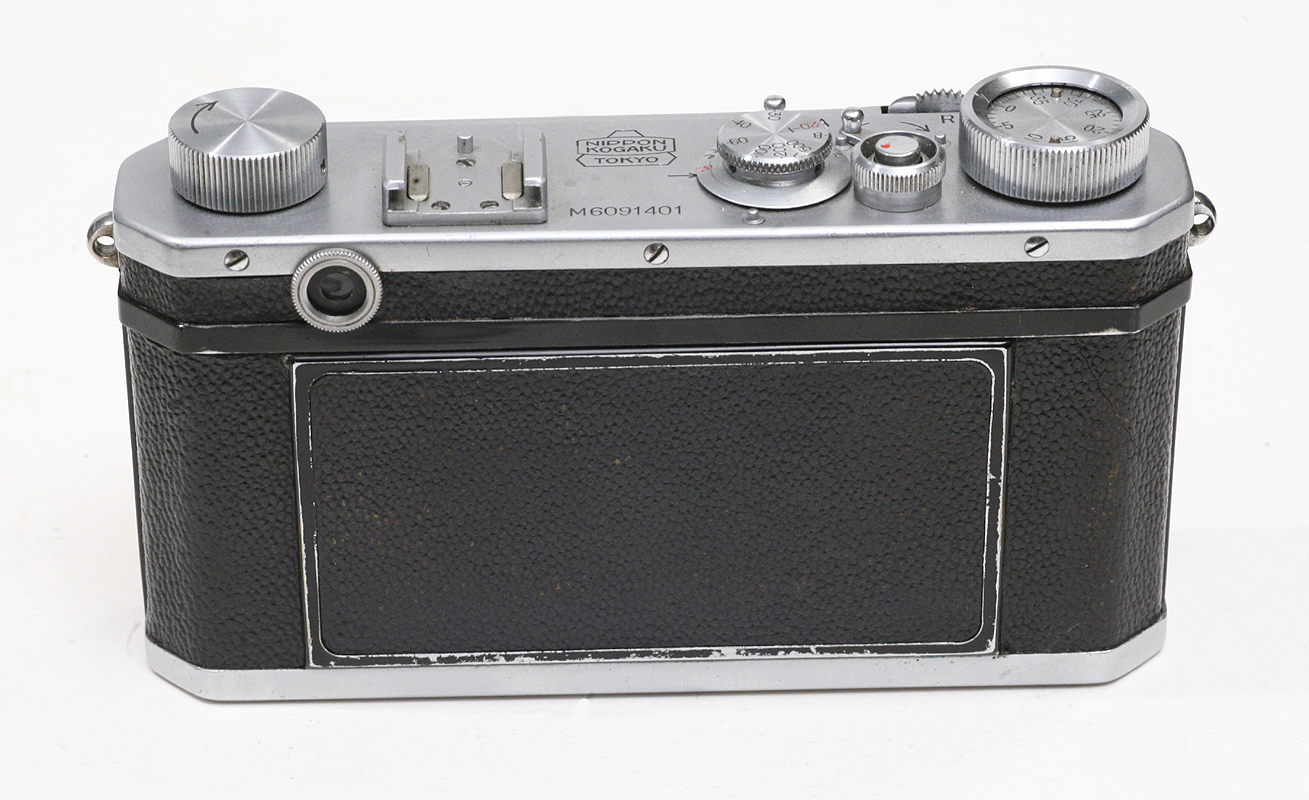
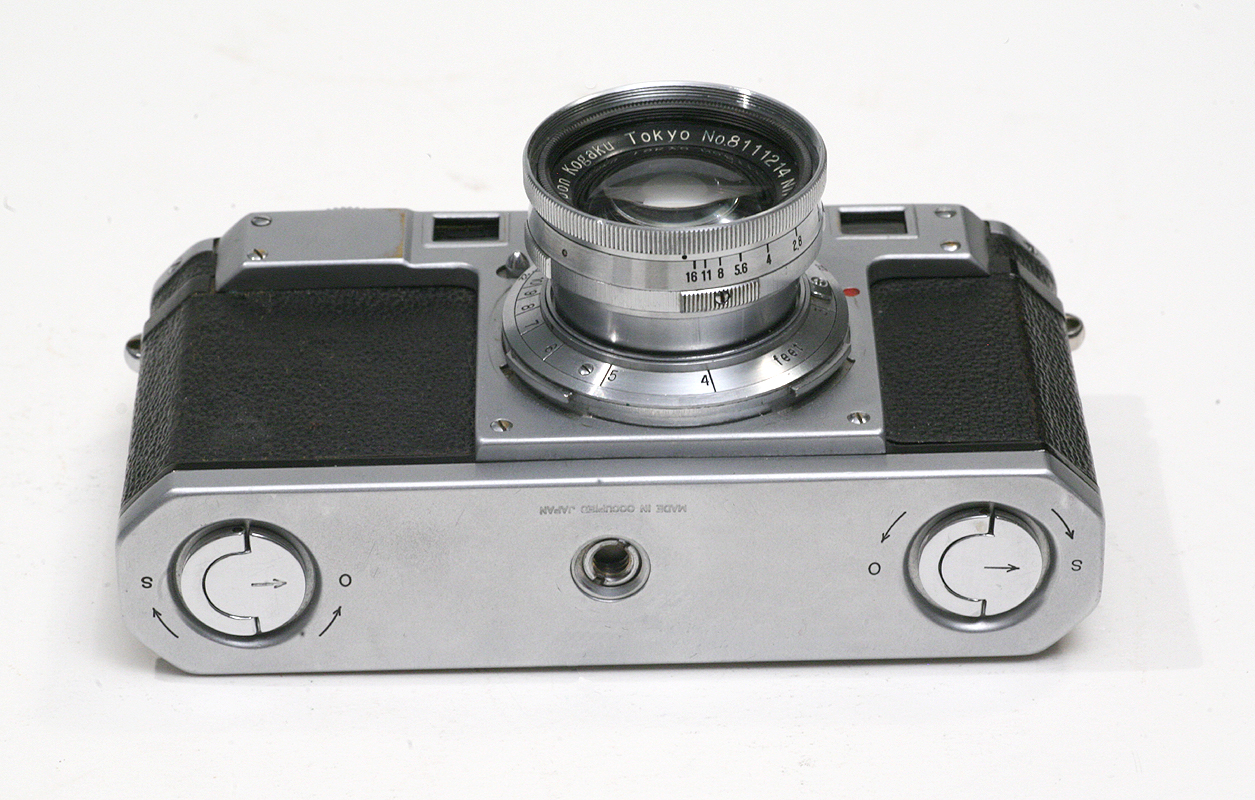
Note the MIOJ engraving on the bottom.
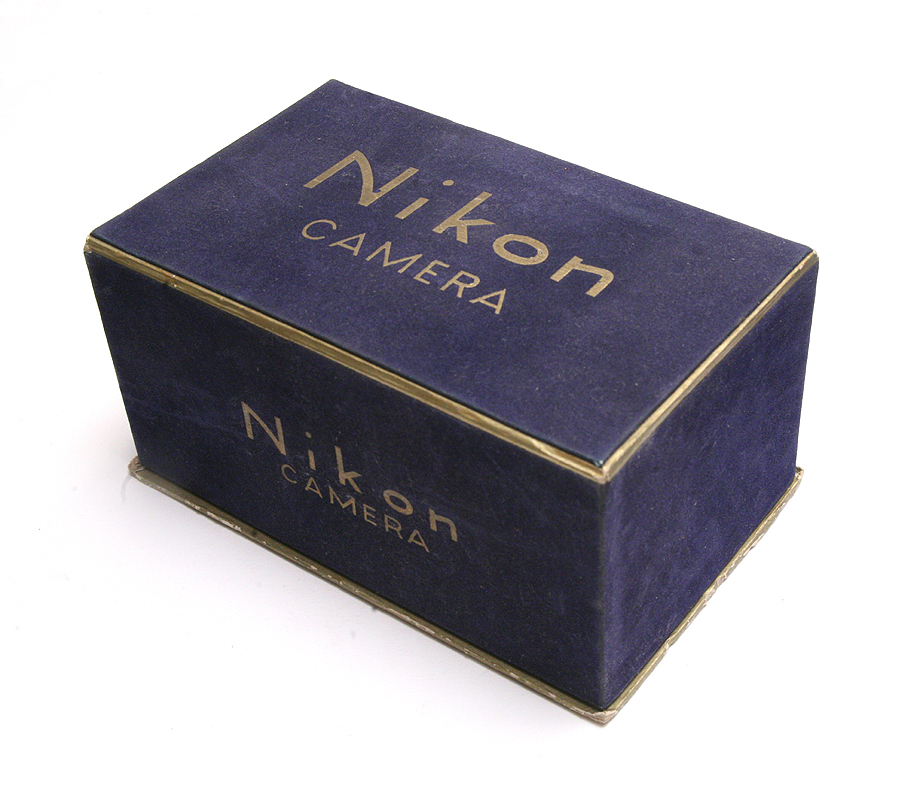
The blue and gold felt box.
It is always interesting (at least to me) when you can connect a camera to a part of history, no matter
how small. In Wes Loder's book (The Nikon Camera in America 1946-1953, which is a great read) he
mentions that Adolf Gasser traveled to New York to promote the Nikon, set up an agreement with Marty
Forscher to service Nikons on the east coast. At that point Gasser/OFITRA ordered twenty cameras
and ten extra lenses. Among them were twelve cameras with the 50/3.5 Nikkors, the last to ship on
Nikon bodies.

An unsynched Nikon M with 50/2 Nikkor collapsible.



Note the MIOJ engraving on the bottom.

The blue and gold felt box.
The camera pictured, M6091196, was produced in a batch of cameras in Feb 1950, according to the data in Bob Rotoloni's book (Nikon Rangefinder Camera). The order was placed in March of 1950. Nippon Kogaku did not have much, if any stock sitting around as they were selling all that they could produce and were doing what they could to increase production. According to Loder, this batch of cameras were mostly sold to professional photographers in the San Francisco Bay area, and this camera came complete with the case and box from the collection of a camera store owner in the Bay area.
It may seem trivial, but I think it is neat to be able to connect a camera to a small bit of history.
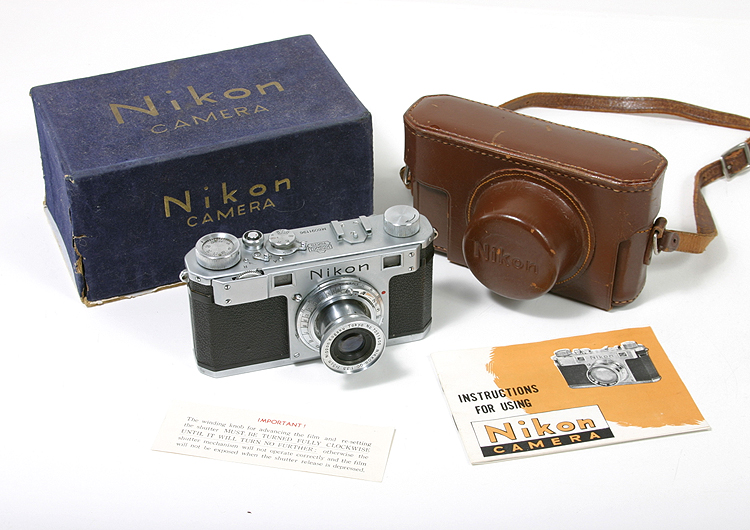
The Nikon M outfit described above.
